Chapter 10 continued PDF

| Title | Chapter 10 continued |
|---|---|
| Author | Mandy Lazaro |
| Course | Biochemistry I |
| Institution | University of Nevada, Las Vegas |
| Pages | 50 |
| File Size | 2.6 MB |
| File Type | |
| Total Downloads | 23 |
| Total Views | 184 |
Summary
Summer 2019...
Description
Chemistry 474 – Biochemistry I Summer 2019
Chapter 10: Regulatory Strategies Chapter 12: Lipids and Cell Membranes
https://cdn.inst-fs-iad-prod.inscloudgate.net/e4757a38-aa6c-49e2-a3c2-e1cf4f0ad1ff/…nt_type=application%2Fvnd.openxmlformats-officedocument.presentationml.presentation
7/2/19, 10J12 AM Page 1 of 50
Biochemistry Schedule • Online Quiz 5 – On Canvas today, due 11:59 pm Wed night • Team-Based Quiz 5 – During class Wed
2
https://cdn.inst-fs-iad-prod.inscloudgate.net/e4757a38-aa6c-49e2-a3c2-e1cf4f0ad1ff/…nt_type=application%2Fvnd.openxmlformats-officedocument.presentationml.presentation
7/2/19, 10J12 AM Page 2 of 50
LECTURE OUTLINE
• proteolysis of zymogens – chymotrypsinogen and trypsinogen
• protease inhibitors – pancreatic trypsin inhibitor
• blood clotting cascade – intrinsic and extrinsic pathways
3
https://cdn.inst-fs-iad-prod.inscloudgate.net/e4757a38-aa6c-49e2-a3c2-e1cf4f0ad1ff/…nt_type=application%2Fvnd.openxmlformats-officedocument.presentationml.presentation
7/2/19, 10J12 AM Page 3 of 50
Role of enteropeptidase • duodenal zymogens – must have coordinated activation – trypsin • common activator of all pancreatic zymogens – trypsinogen – chymotrypsinogen – proelastase – procarboxypeptidase – prolipase
– what activates trypsin? • enteropeptidase
4
https://cdn.inst-fs-iad-prod.inscloudgate.net/e4757a38-aa6c-49e2-a3c2-e1cf4f0ad1ff/…nt_type=application%2Fvnd.openxmlformats-officedocument.presentationml.presentation
7/2/19, 10J12 AM Page 4 of 50
Inhibitors of proteases • pancreatic trypsin inhibitor – 6 kDa protein – binds tightly to trypsin active site in pancreas or pancreatic ducts • prevents acute pancreatitis • dissociation constant is 0.1 pM • standard free energy of binding is -18 kcal/mol • 8 M urea or 6 M guanidine hydrochloride do not dissociate this peptide-trypsin complex
5
https://cdn.inst-fs-iad-prod.inscloudgate.net/e4757a38-aa6c-49e2-a3c2-e1cf4f0ad1ff/…nt_type=application%2Fvnd.openxmlformats-officedocument.presentationml.presentation
7/2/19, 10J12 AM Page 5 of 50
Inhibitors of proteases • pancreatic trypsin inhibitor is an effective substrate analog – inhibitor Lys-15 • interacts with Asp-189 in substrate specificity pocket to form salt bridge • many other additional H-bonds with trypsin main chain • Lys-15 carbonyl group in active site
– structure of inhibitor unchanged upon binding • Lys-15-Ala-16 peptide bond is l d t l t
6
https://cdn.inst-fs-iad-prod.inscloudgate.net/e4757a38-aa6c-49e2-a3c2-e1cf4f0ad1ff/…nt_type=application%2Fvnd.openxmlformats-officedocument.presentationml.presentation
7/2/19, 10J12 AM Page 6 of 50
Other protease inhibitors • 1-antitrypsin – 53 kDa plasma protein – protects tissues from neutrophil elastase • blocks elastase more effectively than trypsin • binds nearly irreversibly to active site
7
https://cdn.inst-fs-iad-prod.inscloudgate.net/e4757a38-aa6c-49e2-a3c2-e1cf4f0ad1ff/…nt_type=application%2Fvnd.openxmlformats-officedocument.presentationml.presentation
7/2/19, 10J12 AM Page 7 of 50
Other protease inhibitors
• 1-antitrypsin has a type Z mutation in humans
• genetic disorder produces 1-antitrypsin deficiency – Lys for Glu substitution at residue 53 – lowered liver secretion of 1-antitrypsin to 15% of normal in homozygotes – excess elastase destroys aveolar walls in lungs • digestion of elastic fibers and connective tissue proteins
8
https://cdn.inst-fs-iad-prod.inscloudgate.net/e4757a38-aa6c-49e2-a3c2-e1cf4f0ad1ff/…nt_type=application%2Fvnd.openxmlformats-officedocument.presentationml.presentation
7/2/19, 10J12 AM Page 8 of 50
Blood clotting cascade • blood clot formation due to cascade of zymogen activations – two pathways • intrinsic pathway – endothelial lining rupture exposes anionic surfaces
• extrinsic pathway may be most crucial to blood clotting – trauma exposes tissue factor (TF) – integral membrane glycoprotein
– final common pathway • thrombin is protease that converts fibrinogen to fibrin 9
https://cdn.inst-fs-iad-prod.inscloudgate.net/e4757a38-aa6c-49e2-a3c2-e1cf4f0ad1ff/…nt_type=application%2Fvnd.openxmlformats-officedocument.presentationml.presentation
7/2/19, 10J12 AM Page 9 of 50
●
●
●
● ●
Blood-clotting cascade Intrinsic pathway begins with activation of factor XII (Hageman factor) Extrinsic pathway triggered by trauma which releases tissue factor (TF) TF forms complex with factor VII to initiate cascade activating thrombin Inactive clotting factors = red Activated clotting factors = yellow
10
https://cdn.inst-fs-iad-prod.inscloudgate.net/e4757a38-aa6c-49e2-a3c2-e1cf4f0ad1ff/…nt_type=application%2Fvnd.openxmlformats-officedocument.presentationml.presentation
7/2/19, 10J12 AM Page 10 of 50
Lecture Outline
•
cellular membrane components and properties
•
fatty acids –
common and systematic names
–
structures
•
3 common types of membrane lipids
•
phosphoglycerides based on glycerol
•
sphingomyelin based on sphingosine
•
glycolipids are also based on sphingosine
•
asymmetric distribution of phospholipids in membrane
•
cholesterol is a steroid
•
membrane lipids are amphipathic
•
membrane proteins
–
–
–
phospholipids, glycolipids, cholesterol
phosphatidylserine (PS), phosphatidylcholine (PC)
membrane formation, lipid vesicles, impermeable lipid bilayers
–
peripheral and integral
–
membrane spanning a-helices
–
channel proteins and b-strands
–
prostaglandin H2 synthase-1 (cyclooxygenase-1)
–
covalently attached hydrophobic groups anchor proteins
–
amino acid sequence predicts transmembrane helices
•
•
•
bacteriorhodopsin
bacterial porin
lipid and protein diffusions in membranes –
11
lateral diffusion
https://cdn.inst-fs-iad-prod.inscloudgate.net/e4757a38-aa6c-49e2-a3c2-e1cf4f0ad1ff/…nt_type=application%2Fvnd.openxmlformats-officedocument.presentationml.presentation
7/2/19, 10J12 AM Page 11 of 50
HIV particle exits an infected cell by membrane budding
Cellular membranes may spontaneously self-assemble
• •
•
Hydrophobic interactions Fatty acid tails of membrane lipids pack together Polar heads exposed on surface
12
https://cdn.inst-fs-iad-prod.inscloudgate.net/e4757a38-aa6c-49e2-a3c2-e1cf4f0ad1ff/…nt_type=application%2Fvnd.openxmlformats-officedocument.presentationml.presentation
7/2/19, 10J12 AM Page 12 of 50
Features of biological membrane 1.
Sheet-like structures • closed boundaries – 2 molecules thick – Thickness ~ 60 Å (6 nm) – 100 Å (10 nm)
2.
Lipids and proteins • Lipid:protein mass ratio = 1:4 – 4:1
3.
hydrophobic and hydrophilic properties • form closed biomolecular sheets • lipid bilayers – barrier for polar molecules
4.
proteins with many functions – pumps, channels, receptors, enzymes
5
ti
l t
13
bli
https://cdn.inst-fs-iad-prod.inscloudgate.net/e4757a38-aa6c-49e2-a3c2-e1cf4f0ad1ff/…nt_type=application%2Fvnd.openxmlformats-officedocument.presentationml.presentation
7/2/19, 10J12 AM Page 13 of 50
Fatty acid structures
• fatty acids - long hydrocarbon chains – varying lengths and degrees of unsaturation – terminate with carboxylic acid • C18:0 saturated fatty acid is octadecanoic acid – parent hydrocarbon is octadecane
• C18:1 with one double bond is octadecenoic acid • C18:2 with 2 double bonds is octadecadienoic acid • C18:3 is octadecatrienoic acid
• carbon numbering starts at carboxy terminus – carbons 2 and 3 are a and b, respectively – terminal methyl is w-carbon – cis-Δ9 • cis double bond between carbons 9 and 10
– trans-Δ2 • trans double bond between carbons 2 and 3
• C # may start at distal end – w-carbon methyl is number one
14
• w-3 fatty acids
https://cdn.inst-fs-iad-prod.inscloudgate.net/e4757a38-aa6c-49e2-a3c2-e1cf4f0ad1ff/…nt_type=application%2Fvnd.openxmlformats-officedocument.presentationml.presentation
7/2/19, 10J12 AM Page 14 of 50
Fatty acid structures • fatty acids in ionized carboxylate forms at pH 7 – palmitate (16:0) and not palmitic acid – oleate (18:1) and not oleic acid
• – •
–
– •
degrees of unsaturation fatty acids usually contain even number of carbons 14 to 24 carbons - biological range
16 and 18 carbon fatty acids most common
unsaturation has 1 or more double bonds separated by -CH2usually cis double bonds
15
https://cdn.inst-fs-iad-prod.inscloudgate.net/e4757a38-aa6c-49e2-a3c2-e1cf4f0ad1ff/…nt_type=application%2Fvnd.openxmlformats-officedocument.presentationml.presentation
7/2/19, 10J12 AM Page 15 of 50
16
https://cdn.inst-fs-iad-prod.inscloudgate.net/e4757a38-aa6c-49e2-a3c2-e1cf4f0ad1ff/…nt_type=application%2Fvnd.openxmlformats-officedocument.presentationml.presentation
7/2/19, 10J12 AM Page 16 of 50
MEMBRANE LIPIDS The common types : 1.
Phospholipids
2.
Glycolipids
3.
Cholesterol 17
https://cdn.inst-fs-iad-prod.inscloudgate.net/e4757a38-aa6c-49e2-a3c2-e1cf4f0ad1ff/…nt_type=application%2Fvnd.openxmlformats-officedocument.presentationml.presentation
7/2/19, 10J12 AM Page 17 of 50
Phospholipids • abundant in all biological membranes – composed of 4 components • one or more fatty acids • platform for fatty acid attachment • phosphate • alcohol attached to phosphate
– platforms • Glycerol • 3 carbon alcohol – Phosphoglycerides or phosphoglycerols » glycerol, 2 fatty acids, phosphorylated alcohol » C-1 and C-2 are esterified to fatty acid
18
https://cdn.inst-fs-iad-prod.inscloudgate.net/e4757a38-aa6c-49e2-a3c2-e1cf4f0ad1ff/…nt_type=application%2Fvnd.openxmlformats-officedocument.presentationml.presentation
7/2/19, 10J12 AM Page 18 of 50
Alcohols and phosphoglycerides • major phosphoglyceride s – derived from phosphatidate
• major phosphoglycerides – phosphatidylcholine (PC), phosphatidylethanolamine (PE), phosphatidylserine (PS), phosphatidylinositol (PI), diphosphatidylglycerol (cardiolipin)
• ester bond between phosphate of
19
https://cdn.inst-fs-iad-prod.inscloudgate.net/e4757a38-aa6c-49e2-a3c2-e1cf4f0ad1ff/…nt_type=application%2Fvnd.openxmlformats-officedocument.presentationml.presentation
7/2/19, 10J12 AM Page 19 of 50
Sphingomyelin and cerebroside • sphingomyelin – phospholipid derived from sphingosine • sphingosine is an amino alcohol with long unsaturated hydrocarbon chain • amino group of sphingosine backbone linked by amide bond to fatty acid • primary hydroxyl group of sphingosine esterified to phosphorylcholine
20
https://cdn.inst-fs-iad-prod.inscloudgate.net/e4757a38-aa6c-49e2-a3c2-e1cf4f0ad1ff/…nt_type=application%2Fvnd.openxmlformats-officedocument.presentationml.presentation
7/2/19, 10J12 AM Page 20 of 50
Membrane lipids with carbohydrate • glycolipids – 2nd major class – sugar-containing lipids derived from sphingosine • sphingosine backbone amino group acylated by fatty acid • sphingosine primary hydroxyl linked to one or more sugars and not phosphorylcholine
– simplest glycolipid is cerebroside • single glucose or galactose residue
21
https://cdn.inst-fs-iad-prod.inscloudgate.net/e4757a38-aa6c-49e2-a3c2-e1cf4f0ad1ff/…nt_type=application%2Fvnd.openxmlformats-officedocument.presentationml.presentation
7/2/19, 10J12 AM Page 21 of 50
Learning Check Which is correct? a) phosphatidylethanolamine contains choline b) sphingomyelin contains glycerol c) in sphingonyelin, the primary -OH group of sphingosine is esterified to phosphorylserine d) phosphatidate is the simplest phosphoglyceride e) phosphatidylcholine contains sphingosine
22
https://cdn.inst-fs-iad-prod.inscloudgate.net/e4757a38-aa6c-49e2-a3c2-e1cf4f0ad1ff/…nt_type=application%2Fvnd.openxmlformats-officedocument.presentationml.presentation
7/2/19, 10J12 AM Page 22 of 50
Lipid based on steroid structure • cholesterol - third major type – steroid built from 4 linked hydrocarbon rings – hydrocarbon tail and hydroxyl group at opposite ends – orientation is parallel to phospholipids in membranes • hydr head
– absent animal
pholipid
rly all
23
https://cdn.inst-fs-iad-prod.inscloudgate.net/e4757a38-aa6c-49e2-a3c2-e1cf4f0ad1ff/…nt_type=application%2Fvnd.openxmlformats-officedocument.presentationml.presentation
7/2/19, 10J12 AM Page 23 of 50
Ether lipids with branched chains • archaea membranes differ from eukaryotes or prokaryotes – – – –
non-polar chains in ether linkage to glycerol backbone glycerol stereochemistry inverted compared to phosphatidate alkyl chains are branched and saturated archaeal lipids resistant to hydrolysis (ether linkage) and oxidation (branched alkyl chains) – lipids help archaea withstand high temperature, high salt, low pH
24
https://cdn.inst-fs-iad-prod.inscloudgate.net/e4757a38-aa6c-49e2-a3c2-e1cf4f0ad1ff/…nt_type=application%2Fvnd.openxmlformats-officedocument.presentationml.presentation
7/2/19, 10J12 AM Page 24 of 50
Phosphoglyceride model • membrane lipids – amphipathic molecules • hydrophilic and hydrophobic moieties
– phosphatidylcholine • roughly rectangular • hydrophobic fatty acid chains parallel • hydrophilic phosphorylcholine polar headgroup points in opposite direction to chains • sphingomyelin and archaeal lipids in similar conformations
25
https://cdn.inst-fs-iad-prod.inscloudgate.net/e4757a38-aa6c-49e2-a3c2-e1cf4f0ad1ff/…nt_type=application%2Fvnd.openxmlformats-officedocument.presentationml.presentation
7/2/19, 10J12 AM Page 25 of 50
Phospholipids and glycolipids readily form bimolecular sheets • two limiting possibilities due to amphipathic nature – micelle • small structure < 200 Å (20 nm) in diameter
– lipid bilayer or bimolecular sheet • favored leaflet structure in aqueous media • extended dimensions of up to 107 Å (~1 mm) • 2 fatty acid chains in phospholipid or glycolipid are too bulky for micelle
26
https://cdn.inst-fs-iad-prod.inscloudgate.net/e4757a38-aa6c-49e2-a3c2-e1cf4f0ad1ff/…nt_type=application%2Fvnd.openxmlformats-officedocument.presentationml.presentation
7/2/19, 10J12 AM Page 26 of 50
Spontaneous formation • phospholipids form lipid bilayers – self-assembly process that is rapid and spontaneous – hydrophobic interactions • major driving force for lipid bilayer formation • van der Waals forces between hydrocarbon tails – favor close packing of hydrocarbon chains
– hydrophilic interactions • polar head groups and water – participate in electrostatic and H-bonding interactions
• lipid bilayers are cooperative structures – many reinforcing, noncovalent interactions • predominantly hydrophobic interactions 27 • lipid bilayers are extensive compartmentalized self-sealing
https://cdn.inst-fs-iad-prod.inscloudgate.net/e4757a38-aa6c-49e2-a3c2-e1cf4f0ad1ff/…nt_type=application%2Fvnd.openxmlformats-officedocument.presentationml.presentation
7/2/19, 10J12 AM Page 27 of 50
Phospholipids form lipid vesicles • lipid vesicles or liposomes – aqueous compartments enclosed by lipid bilayer – study membrane permeability or deliver drugs to cells – liposome formation • PC + aqueous medium + sonication di i i
28
https://cdn.inst-fs-iad-prod.inscloudgate.net/e4757a38-aa6c-49e2-a3c2-e1cf4f0ad1ff/…nt_type=application%2Fvnd.openxmlformats-officedocument.presentationml.presentation
7/2/19, 10J12 AM Page 28 of 50
Molecular trapping • preparation of Glycontaining liposomes – PC + 0.1 M Gly + aqueous medium + sonication – 500 Å diameter liposomes with ~2,000 Gly – liposome separation from surrounding Gly medium • dialysis or gel-filtration chromatography
– Gly efflux gives liposome permeability
29
https://cdn.inst-fs-iad-prod.inscloudgate.net/e4757a38-aa6c-49e2-a3c2-e1cf4f0ad1ff/…nt_type=application%2Fvnd.openxmlformats-officedocument.presentationml.presentation
7/2/19, 10J12 AM Page 29 of 50
Proteins and membrane processes • membrane proteins – chemical transport and information transfer across permeability barrier – protein content of membranes vary depending on function • myelin – Membrane (electrical insulator) is only 18% protein
• metabolically active membranes – plasma membranes are ~50% protein (pumps, channels, )
SDS-PAGE of membrane proteins A = erythrocyte plasma membrane B = retinal rod cell photoreceptor membrane C = muscle cell sarcoplasmic reticulum membrane 30
https://cdn.inst-fs-iad-prod.inscloudgate.net/e4757a38-aa6c-49e2-a3c2-e1cf4f0ad1ff/…nt_type=application%2Fvnd.openxmlformats-officedocument.presentationml.presentation
7/2/19, 10J12 AM Page 30 of 50
Protein association with membrane • peripheral membrane proteins – electrostatic and Hbond binding to lipid head groups (c) – binding to integral membrane protein surfaces (d) – covalently attached fatty acid hydrophobic chain may anchor to membrane (e) – high ionic strength
31
https://cdn.inst-fs-iad-prod.inscloudgate.net/e4757a38-aa6c-49e2-a3c2-e1cf4f0ad1ff/…nt_type=application%2Fvnd.openxmlformats-officedocument.presentationml.presentation
7/2/19, 10J12 AM Page 31 of 50
Mechanism of protein spanning • integral membrane proteins • common structural feature: membrane-spanning α helices • bacteriorhodopsin – archaeal membrane protein – uses light energy to transport H+ out of cell – H+ gradient drives ATP synthesis View from cytoplasmic side of – 7 perpendicular a-helices span membrane 45 Å width of cell membrane 32
https://cdn.inst-fs-iad-prod.inscloudgate.net/e4757a38-aa6c-49e2-a3c2-e1cf4f0ad1ff/…nt_type=application%2Fvnd.openxmlformats-officedocument.presentationml.presentation
7/2/19, 10J12 AM Page 32 of 50
Primary sequence is important • bacteriorhodopsin – most membrane spanning a-helical residues are hydrophobic – nonpolar amino acids • in contact with hydrocarbon membrane core or with one another
Amino acid sequence of bacteriorhodopsin • Yellow regions are 7 a-helices • Red residues are charged 33
https://cdn.inst-fs-iad-prod.inscloudgate.net/e4757a38-aa6c-49e2-a3c2-e1cf4f0ad1ff/…nt_type=application%2Fvnd.openxmlform...
Similar Free PDFs

Chapter 10 continued
- 50 Pages

Bone tissue continued Quiz
- 2 Pages

Chapter 10 quiz #10
- 3 Pages

Notes 10 - Chapter 10
- 5 Pages

HDFS 201 continued
- 7 Pages

Byzantine Empire Continued
- 3 Pages

5. Positioning continued
- 3 Pages

People vs. Green Continued
- 1 Pages
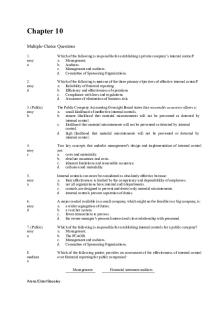
Chapter-10
- 19 Pages
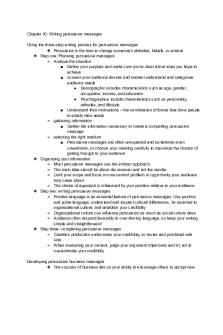
Chapter 10
- 5 Pages
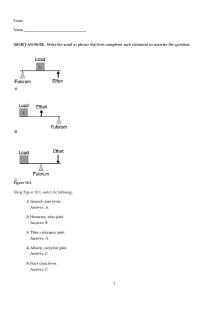
Chapter 10
- 14 Pages

Chapter 10
- 111 Pages
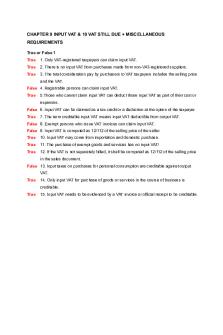
Chapter 10
- 16 Pages
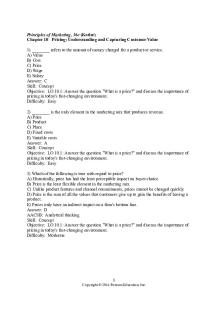
Chapter 10
- 47 Pages
Popular Institutions
- Tinajero National High School - Annex
- Politeknik Caltex Riau
- Yokohama City University
- SGT University
- University of Al-Qadisiyah
- Divine Word College of Vigan
- Techniek College Rotterdam
- Universidade de Santiago
- Universiti Teknologi MARA Cawangan Johor Kampus Pasir Gudang
- Poltekkes Kemenkes Yogyakarta
- Baguio City National High School
- Colegio san marcos
- preparatoria uno
- Centro de Bachillerato Tecnológico Industrial y de Servicios No. 107
- Dalian Maritime University
- Quang Trung Secondary School
- Colegio Tecnológico en Informática
- Corporación Regional de Educación Superior
- Grupo CEDVA
- Dar Al Uloom University
- Centro de Estudios Preuniversitarios de la Universidad Nacional de Ingeniería
- 上智大学
- Aakash International School, Nuna Majara
- San Felipe Neri Catholic School
- Kang Chiao International School - New Taipei City
- Misamis Occidental National High School
- Institución Educativa Escuela Normal Juan Ladrilleros
- Kolehiyo ng Pantukan
- Batanes State College
- Instituto Continental
- Sekolah Menengah Kejuruan Kesehatan Kaltara (Tarakan)
- Colegio de La Inmaculada Concepcion - Cebu

